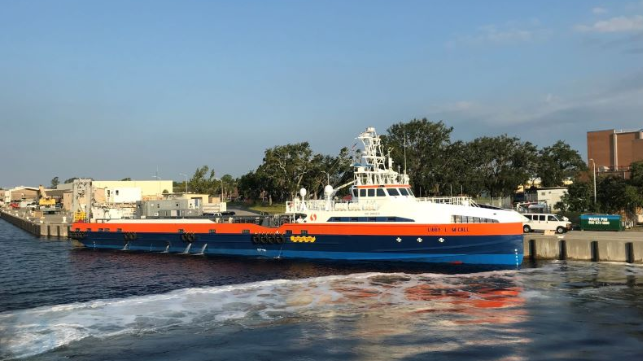U.S. Navy Invests $40M in Large Unmanned Vessel Development

The U.S. Navy has taken a significant step forward in its accelerated (and controversial) push to deploy unmanned naval vessels. Last week, it awarded contracts totaling nearly $42 million to six companies for studies contributing to the development of its future Large Unmanned Surface Vessel (LUSV) program. Each contract includes an option for engineering support, which could bring the cumulative value to nearly $60 million.
The firm-fixed price contracts were awarded to six familiar names in defense shipbuilding and technology: Huntington Ingalls; Lockheed Martin; Bollinger Shipyards Lockport; Fincantieri's Marinette Marine; Gibbs & Cox; and Austal USA. The award is the culmination of an open competition that began in FY2019.
The contracts will help the Navy to refine specifications and requirements for a Large Unmanned Surface Vessel and conduct reliability studies informed by industry partners, addressing concerns from members of Congress about the technological maturity and utility of a future unmanned component of the fleet. The design work precedes a competition for the full detail design and construction contract (subject to funding and congressional approval).
“These studies contracts will allow the Navy to harvest the learning from our land- and sea-based prototyping efforts and work directly with industry to refine the requirements for an affordable, reliable, and effective Large Unmanned Surface Vessel and reduce risk for a future design and construction competition,” said Capt. Pete Small, program manager for Unmanned Maritime Systems.
Ultimately, the LUSV program is intended to deliver low-cost, high-endurance unmanned vehicles that can complement manned surface combatants without the expense and vulnerability of a human crew.
Earlier this year, the Navy asked for congressional support to push larger unmanned vessels into production on an accelerated timetable, without first investing time and resources into more technological maturation. "Without having the platforms, it's very difficult to do that type of integrated testing we would need to do," argued then-Acting Secretary of the Navy Thomas Modly at a hearing in February. "So we are proceeding, we think, at a somewhat cautious pace to do this. But it's absolutely going to be a part of whatever future force structure we might have and so we need to start experimenting with concepts, understanding how the technology will work."
Rep. Adam Smith (D-WA), the chair of the House Armed Services Committee, responded by comparing the Navy's MUSV / LUSV plan to the flawed Littoral Combat Ship procurement program. Both variants of the LCS have encountered issues regarding their reliability, survivability, lethality and capability, and they are being phased out in future production in favor of a more traditional multi-role frigate design.
"The Navy needs to decide what it actually wants and how it will operate these [unmanned] ships before moving into serial production. Basic questions remain unanswered and I highly encourage the Navy to ensure requirements have been set before committing substantial shipbuilding resources," Rep. Smith said in February.
The powerful Senate Armed Services Committee (SASC) has expressed similar concerns, warning that concurrent design and construction for LUSV poses "excessive acquisition risk" as proposed. Concurrent design, development and procurement has caused significant challenges for the Navy in the past, notably for the Ford-class carrier program. The SASC also warned that the "limited understanding of the LUSV concept of employment, requirements and reliability" and the "unclear policy standards" for arming and operating unmanned ships are matters of concern for legislators.
